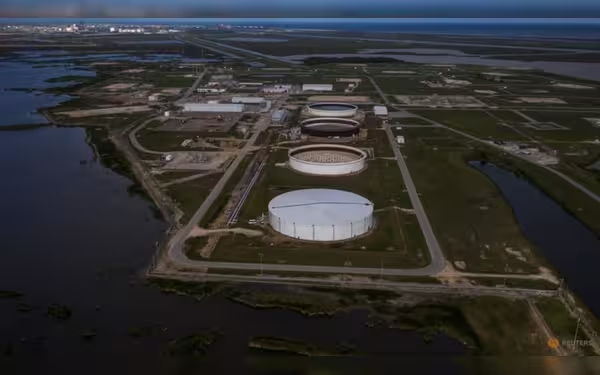Thursday, July 4, 2024 05:44 PM
Oil Futures Maintain Stability Amid Improving Demand
- Crude oil futures stabilize with improving demand and declining inventories
- Positive trend driven by rising U.S. oil demand and drawdown in stockpiles
- Global economic factors influence oil market stability amidst geopolitical tensions
 Image Credits: channelnewsasia
Image Credits: channelnewsasiaCrude oil futures show stability as demand rises and inventories fall, influenced by global economic factors and geopolitical tensions.
Crude oil futures have maintained stability on Friday, set for a second consecutive weekly increase. This positive trend is attributed to the improving demand and decreasing oil and fuel inventories in the U.S., the world's largest oil consumer.
Brent futures for August delivery saw a slight decrease to $85.53 per barrel, following a 0.8% rise in the previous session. Similarly, U.S. West Texas Intermediate crude futures for August delivery experienced a minor decline to $81.15 per barrel, with the July contract closing at $82.17 on Thursday.
Since the beginning of the month, prices have surged by approximately 5%, reaching their highest level in over seven weeks. Analysts at Citi predict that factors such as seasonal demand growth, geopolitical tensions, and the hurricane season will continue to support price levels throughout the summer.
Recent U.S. government data revealed a notable increase in total product supplied, indicating a rise in the country's oil demand to 21.1 million barrels per day. Furthermore, there was a 2.5 million-barrel drawdown in U.S. crude stockpiles, exceeding analysts' expectations. Gasoline inventories also saw a decline, dropping by 2.3 million barrels to 231.2 million barrels.
Positive demand signals from Asia have further boosted market sentiment, with oil refineries in the region gradually resuming operations post maintenance periods. In Japan, core consumer prices rose by 2.5% year-on-year, hinting at potential interest rate hikes by the country's central bank in the near future.
However, the recent U.S. data indicating a decrease in new unemployment claims might lead the Federal Reserve to maintain current interest rates. Higher interest rates typically have a dampening effect on economic growth and, consequently, oil demand.
The stability in crude oil futures, driven by improving demand and declining inventories, reflects a complex interplay of global economic factors. As geopolitical tensions persist and demand dynamics evolve, the oil market remains a key indicator of economic health and stability.













